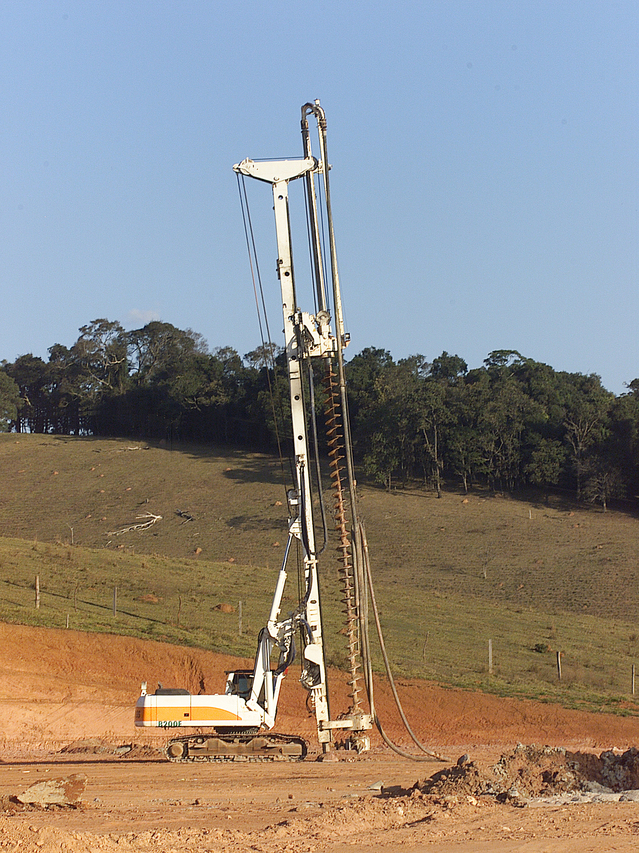Leading 3 Tech Patterns at ConExpo 2017

With overall presence peaking at 128,000 and near unlimited lineups of parked heavy equipment throughout 4 behemoth lots and 5 conference halls in Las Vegas, ConExpo-Con/Agg 2017 measured up to its track record as one of the world’s biggest events of contractor specialists and the equipment that powers international heavy building. A very first to ConExpo this year, the 70,000-square foot Tech Experience highlighted the latest in task site, labor force, production and facilities innovations, but there – as in other places throughout the 2.5 million square feet of exhibition area – it was the equipment that were on complete display. Here’s a look at the most popular equipment software, innovation and services at ConExpo 2017:
Drones
While remarkably not crowding the airspace above ConExpo, drones and drone-related innovation combinations overwhelmed the news at the trade convention. UAV specialists informed Building Dive that the big public crowds and labyrinth of set up crane-booms were a non-starter for an FAA waiver to fly at the program, limiting drone flights to a small number, involving instead flight cages at the Tech Experience school. Nevertheless, drone innovation was included at the most significant equipment supplier cubicles, consisting of presentation laboratories by Caterpillar, John Deere, and Komatsu, to name a few. Many options fixated on site reality capture through photogrammetry for volumetric computations of aggregate products in motion.
Komatsu, for one, has partnered with San Francisco-based Skycatch for exporting drone information into 2-D orthomosaics and algorithmically customized 3-D point clouds, while Lausanne, Switzerland-based Pix4D has actually incorporated its drone reality capture system with crane-mounted cams, enabling extra photography from cranes for hire to be integrated into point clouds and image mosaics. “Drones in a vacuum aren’t all that slick and cannot do much. It’s just in the increased combination with machine telematics and other task site systems and use-case innovations where we’ll see a rise in user value,” stated Dick Zhang, creator and CEO of Pittsburgh-based Identified Technologies, which presented at ConExpo its Truck IQ platform, a sensing unit and software package to determine and integrate lorry load and cycle times with aerial drone information to enhance earth-moving performance.

Telematics
Mentioning improving equipment effectiveness, significant OEMs and third-party telematics platform suppliers leaned greatly on the advantages of wired machines and the IoT-connected task site at ConExpo. With the Association of Equipment Manufacturers standardizing telematics information procedures and offering builders public liability insurance, the majority of companies have actually been quick to promote “mixed fleet” abilities to check out and present functional, mechanical and run-time/idle information on equipment despite make or design. John Deere, for instance, has partnered with Houston-based HCSS to use a cloud-based, web user interface for tracking telematics information from Deere, Caterpillar, Komatsu and Volvo while also using after-market GPS gadgets for tracking older devices.
A main focus of telematics suppliers has been to decrease information overload on users who acknowledge the worth of machine tracking but are overwhelmed with ways to enhance business choices using the information. The outcome has been the production of simple-to-use efficiency control panels with ict risk mitigation on top of artificial intelligence that intend to use more predictive analytics. “There’s all this information coming at the user and they have no idea exactly what to do with it, so we’re concentrated on a critical view of what are the important things you appreciate and how our knowing algorithms better determine what the end user is thinking about,” stated Geet Chopra, senior item supervisor, business intelligence for Glenview, IL-based Teletrac Navman. “Show just that information and filter out the sound- that’s where the market is headed which’s where there is value for the consumer.”
Additive manufacturing
In conjunction with the grand opening of the ConExpo Tech Experience, Task AME – a cooperation between the Association of Equipment Manufacturers, Georgia Tech, the National Fluid Power Association, Oak Ridge National Lab and the University of Minnesota – revealed its totally functional 3-D printed excavator. Although mechanicals and electrical systems were not 3-D printed, the excavator was built from cab, boom, and heat exchanger parts all made used various additive manufacturing innovations.
At 7-feet-long and 400 pounds gross weight, the stick boom was developed with a Wolf Load metal 3-D printer in 5 days, while the 13-pound heat exchanger was produced with an Idea Laser X-Line 1000 powder-bed printer. The cab itself was printed with a room-sized Big Area Additive Manufacturing System, which developed the 3-D carbon fiber and enhanced ABS plastic taxi in just 5 hours. Put together at Oak Ridge National Lab, the excavator was evidence of a concept project that group leaders would cause bigger, faster and more scalable 3-D printing abilities in building and construction whilst also being able to provide a foundation to support landscaping contractors’ designs and projects.
